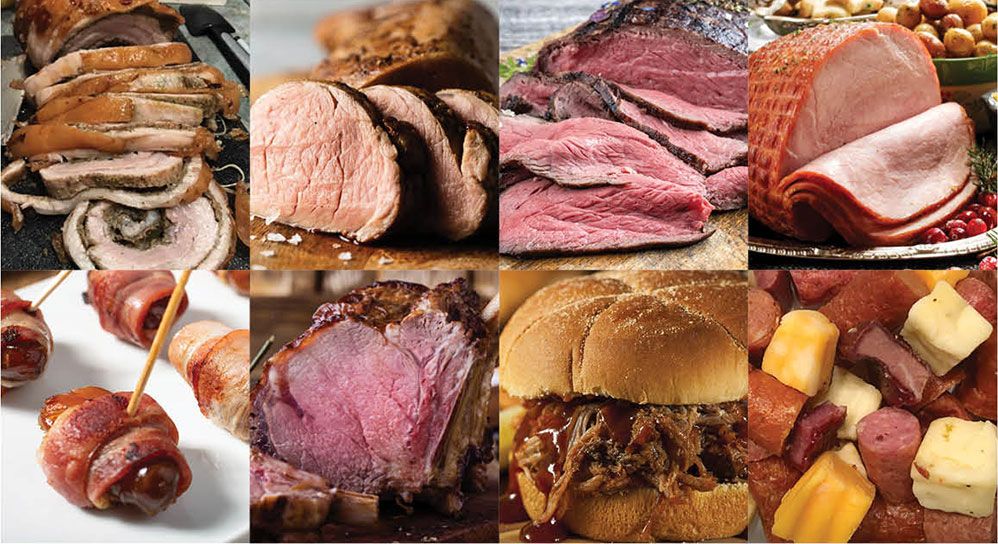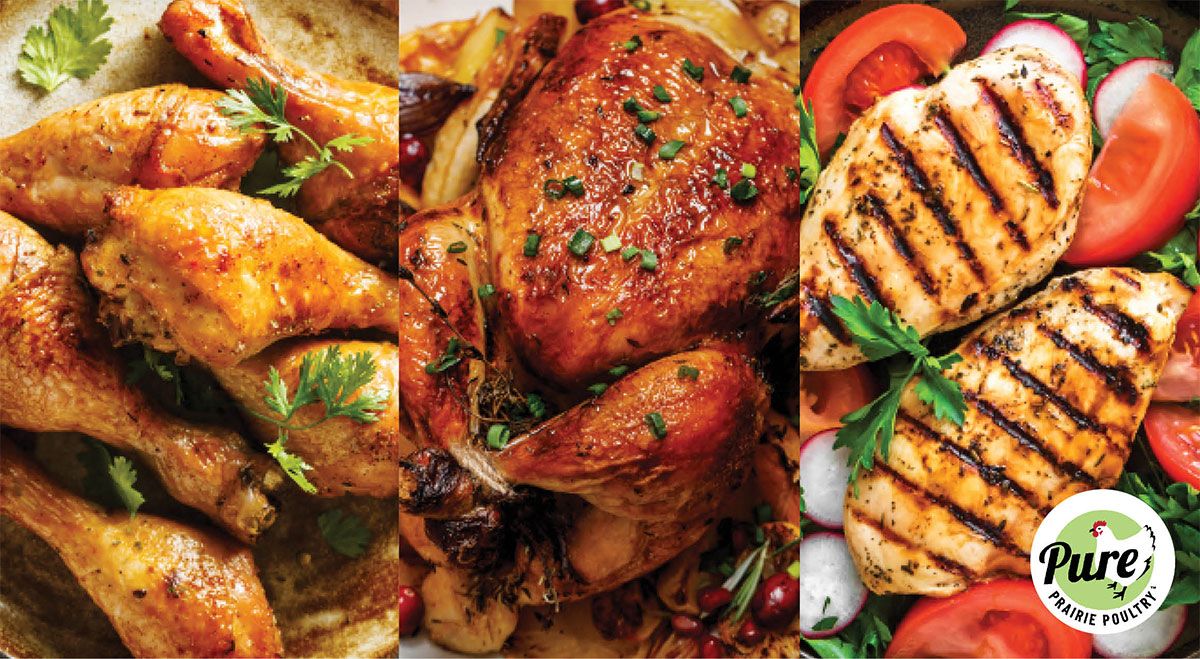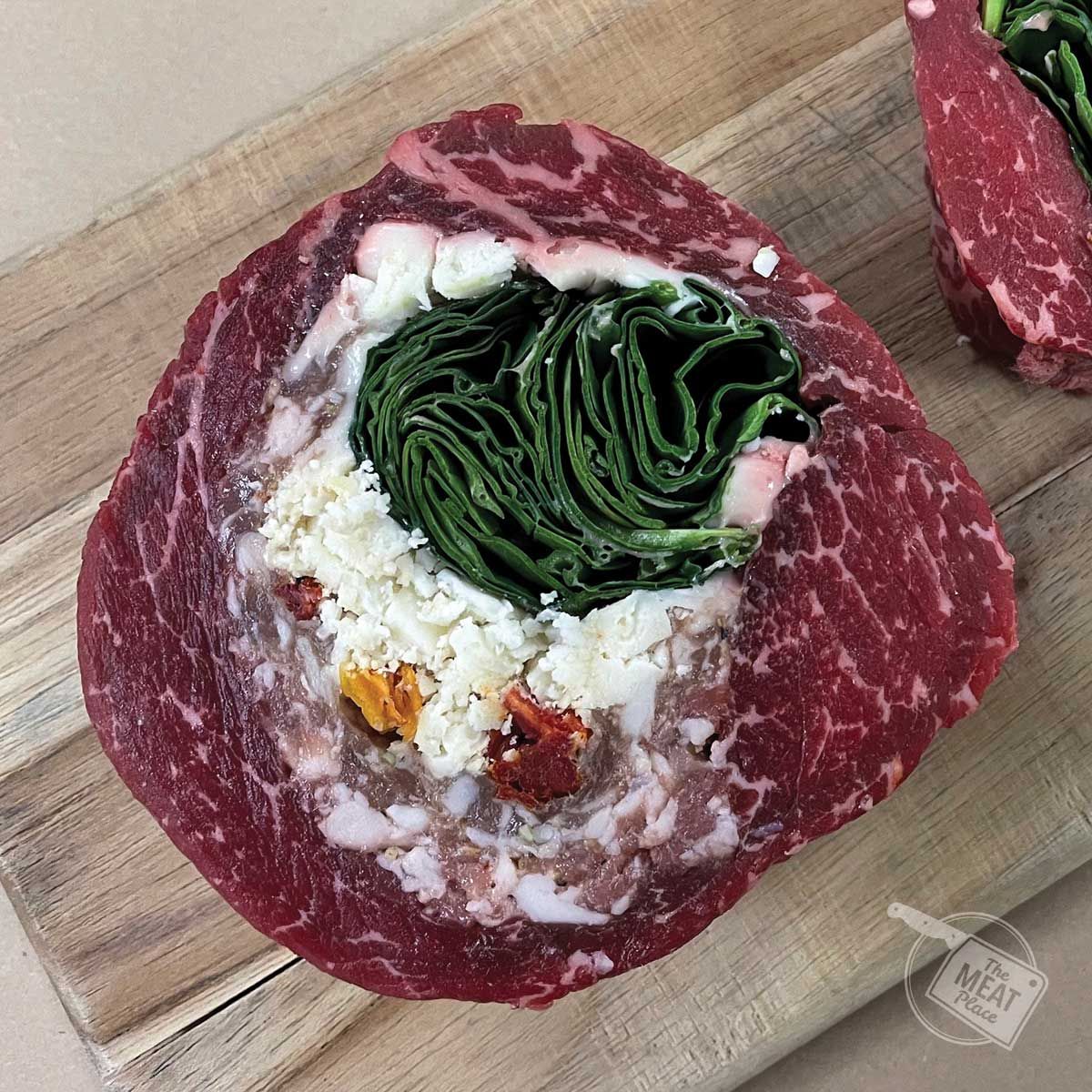Have you placed your holiday season meat orders? From formal dinners to casual parties, it’s the season for getting together with friends and families, and the centerpiece of any holiday celebration is meat, of course. We have a meat case full of delicious options, but we encourage you to call and order your meats in advance! Choosing the right meat can be a little overwhelming, so we thought we’d put together a few traditional and not-so-traditional items you’ll find at Hagberg’s. So, in no particular order, here are our 12 meats of the Holidays.
1. Beef Tenderloin
Tender and juicy, roasted beef tenderloin is a popular cut of beef for holiday dinner tables. It’s a more expensive cut often reserved for special occasions. But don’t skimp. Plan on at least 8 ounces per person. A 3-pound beef tenderloin should be about the right size for six people.
2. Prime Rib
Right up there with turkey and ham, prime rib is a favorite cut for adorning holiday dinner tables. It has a large “eye” of meat in the center, which is juicy, tender, and marbled with delicious fat.
3. Ham
The Christmas ham is a quintessential centerpiece of many holiday feasts. It’s a breeze to prepare and it’s always sure to please for any size gathering.
4. Porketta Roast
Fill your kitchen with the warm aromas of this Iron Range tradition. Hagberg’s Porketta Boneless Pork Loin Roast is expertly flavored with fennel, paprika, and garlic.
5. Rump Roast
Sometimes called a “Holiday” roast, this beef is packed with flavor.
Go traditional, or try it with a little dry rub. A 3-pounder only takes about an hour at 300°F to cook for medium or medium-rare.
6. Pork Tenderloin
Our Boneless Pork Tenderloin naturally contains more flavor without added water or ingredients. Easy to prepare, sear the sides in a skillet, then bake at 400°F for 20-25 minutes. Cooking time may vary, so use a meat thermometer. Remove it from the oven when it reaches 145°F.
7. Pork Loin Roast
A pork loin roast is wide and thick, with a sizable (yet very tender) fat cap running along the top, unlike a narrower pork tenderloin with much less fat. Roast our boneless pork loin roast fat side up (to keep those savory juices flowing) at about 20-25 minutes per pound at 350 °F. Remember, this isn’t chicken, so a little pink is okay.
8. Shredded Beef and Pork
A fast and easy party favorite, our shredded beef and pork are ideal for simple, festive sandwiches at casual holiday get-togethers. Plan on about one pound per 3-4 people. And be sure to check out our sauce selection.
9. Polish Sausage
“Polish” for sausage, our traditional version of this world-famous Kielbasa, is secretly spiced and expertly smoked just as it has been for generations.
10. Meat ‘n’ Cheese Chunks
We like to call it “meat candy.” No holiday party is complete without a bowl of smokey meat sticks, jerky bits, and chunks of cheese in various flavors. Ask for Hagberg’s meat and cheese chunks at our deli.
11. Pie
Yeah, we know; why is pie on a holiday meat list? No holiday feast is complete without a sweet treat, regardless of the meat you decide to serve. We always have a nice selection of pies in the cooler next to the deli.
12. Bacon
We know, we know. Bacon isn’t “traditional” holiday meat. But face it, bacon makes every day more festive. At Hagberg’s, we have a large section of the meat case dedicated to a variety of smoky bacon flavors. Whether using it as a wrap to create delectable hors d’oeuvres, adding bits to your green beans and salads, or just serving it up as a savory side, Hagberg’s freshly sliced-to-order bacon will become your new holiday tradition!
Want more ideas? We have a meat case full of tasty options!







































